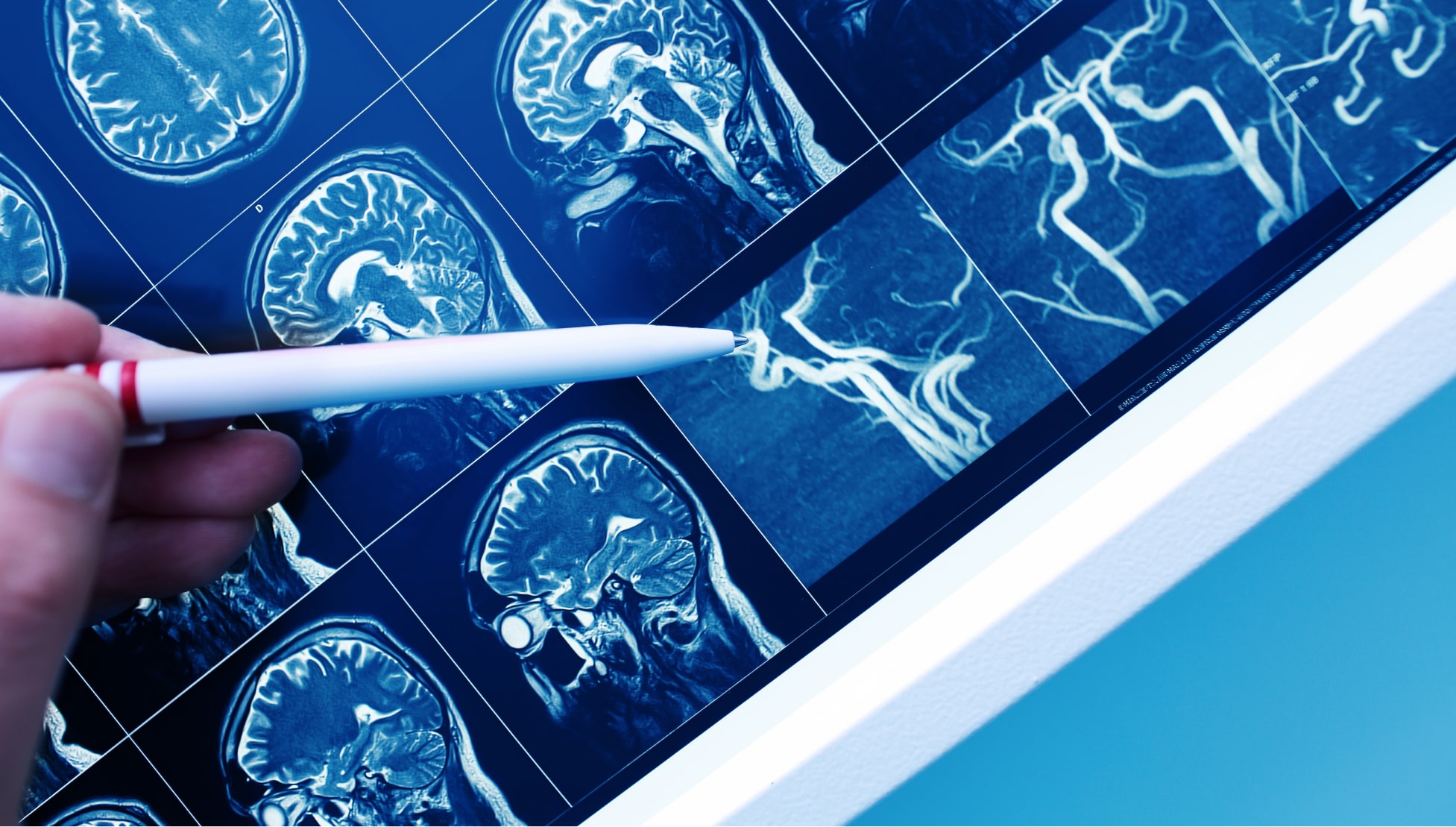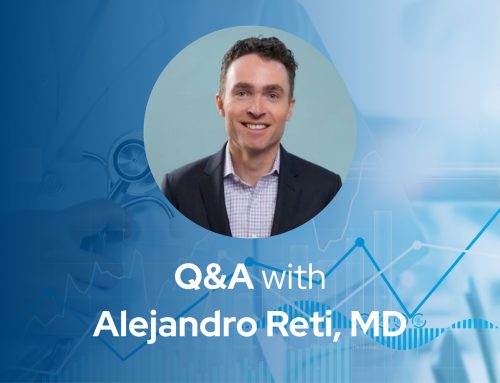
The Critical Role of Early Detection of Stroke Risk: A Guide
May marks an important observance in the healthcare calendar, National Stroke Month, a time dedicated to raising awareness about stroke, its impact, and the paramount importance of early detection. Strokes remain a leading cause of death and long-term disability in the United States, affecting hundreds of thousands of individuals and their families each year. According to the Centers for Disease Control and Prevention (CDC), stroke is the fifth leading cause of death in the U.S., with one person dying from stroke every 3.59 minutes. [1] But what if we could change the narrative? One key lies in early detection of stroke risk, a beacon of hope that can significantly alter patient outcomes.
The Stark Reality of Stroke
In the U.S. alone, someone has a stroke every 40 seconds, tallying up to nearly 800,000 people each year. [1] These numbers aren’t just statistics; they represent lives, families, and communities turned upside down. The financial burden of stroke is also substantial, with direct and indirect costs totaling nearly $46 billion annually. [2]
Unraveling the Causes of Stroke
Understanding the sources and causes of stroke is crucial for prevention and early intervention. Strokes can be classified into two main types:
- Ischemic: Caused by blockages and accounting for about 87% of all cases.
- Hemorrhagic: Caused by bleeding in the brain.
Stroke risk factors include hypertension, high cholesterol, smoking, diabetes, and heart conditions like atrial fibrillation (AFib). In fact, AFib increases the risk of stroke by up to five times. [3] Despite widespread knowledge of these risk factors, identifying individuals at risk remains a challenge, often due to the asymptomatic nature of conditions like AFib.
The Hurdles in Identifying Stroke Risk
Providers face significant obstacles in identifying patients at risk of stroke. These challenges range from the silent nature of risk factors to resource constraints and technological limitations. Let’s delve deeper into these hurdles:
The Silent Threat: Asymptomatic Risk Factors
One major challenge in identifying stroke risk is the silent, undetected presence of risk factors like atrial fibrillation (AFib). AFib is a common heart rhythm disorder that significantly increases the risk of stroke, yet many patients experience few noticeable symptoms. Studies estimate that up to 30% of AFib cases are asymptomatic, posing a significant challenge for healthcare providers. Without obvious symptoms to prompt further investigation, identifying these high-risk patients requires proactive screening. However, implementing such measures can be difficult due to various constraints. [4]
Resource Constraints: Time and Personnel
Healthcare providers often face significant resource constraints that hinder their ability to effectively screen for stroke risk factors. Physicians and staff are often juggling multiple responsibilities, leaving limited time or focus on comprehensive stroke risk assessments.
According to the Association of American Medical Colleges, the U.S. could face a shortage of up to 139,000 physicians by 2033. [5] This shortage means that existing clinicians are often overworked and may not have the capacity to dedicate sufficient time to stroke risk identification.
Budget Constraints: Balancing Priorities
In addition to resource constraints, healthcare organizations also face budget limitations that can impact their ability to prioritize stroke risk identification. Implementing comprehensive stroke risk screening programs requires financial investments in staff training, equipment, and technology.
In a survey by the American College of Healthcare Executives, financial challenges ranked as the top concern for hospital CEOs. [6] This means that initiatives like stroke risk screening may not always receive the necessary financial backing, despite their potential to save lives and reduce the overall burden of stroke.
Technological Limitations for Stroke Detection: Gaps in Data and Analytics
Effective stroke risk identification relies on the ability to collect, analyze, and interpret vast amounts of patient data. However, many healthcare organizations struggle with technological limitations that hinder this process.
One major issue is the lack of interoperability between different health IT systems. Electronic health records (EHRs) and other data sources often exist in silos, making it difficult to gain a comprehensive view of a patient’s risk factors.
Furthermore, many healthcare organizations lack the advanced analytics capabilities needed to derive meaningful insights from patient data. Without tools to efficiently analyze relevant data points from ECG readings and patients’ medical histories, identifying high-risk patients can be like finding a needle in a haystack.
These technological limitations underscore the need for innovative solutions that can bridge data gaps and provide actionable insights for stroke risk identification.
Provider Education and Awareness
Another significant hurdle in identifying stroke risk is the need for ongoing provider education and awareness. AFib often presents as asymptomatic or creating mild symptoms, and thus frequently go unnoticed in ECG readings. Research by Mant et al. (2007) and Faramand et al. (2019) has documented this detection gap. Further, a 2020 study published in JAMA Internal Medicine found that doctors at all levels of training struggled with ECG interpretation, even after receiving educational support. [7]
Mayo Clinic researchers addressed this topic in a 2020 paper: “Medical trainees are expected to learn a vast array of subjects and acquire countless clinical skills in the few short years that are dedicated to formal medical education only a fraction of this time is dedicated to formal ECG education and, unfortunately, opportunities for formal ECG training are lacking once these students enter the professional workforce.” [8]
Of course, one might ask the question of why, in this era, we should rely on overburdened physicians to read ECGs only manually when algorithms may do so effectively and more consistently. It’s not much different than asking an accountant to perform long division manually instead of using a calculator – probably not the best use of her time and brain space.
Overcoming the Hurdles: A Call to Action
The challenges in identifying stroke risks are significant, but they are not insurmountable. By recognizing these hurdles and taking proactive steps to address them, healthcare organizations can make significant strides in improving early stroke detection and ultimately saving lives.
This requires a multifaceted approach that includes prioritizing stroke risk screening in budgetary decisions, adopting advanced technological solutions, and committing to ongoing provider education. It also calls for collaboration among providers to ensure that patients at risk for stroke are identified and receive appropriate interventions.
The Lifesaving Potential of Early Detection
Early detection of stroke and its risk factors can dramatically improve patient outcomes. Studies show that rapid intervention following the first signs of stroke can greatly reduce the risk of death and severe disability. For instance, treatments like thrombolysis are most effective when administered within the first few hours of stroke onset. [9] But again, this requires effective early identification.
Additionally, early detection and management of risk factors like AFib can significantly reduce stroke risk. Anticoagulation therapy, for example, can reduce stroke risk by up to 70% in patients with AFib. [10] This makes the ability to quickly recognize and respond to the signs of stroke a critical component of care.
Practical Strategies for Early Stroke Detection
Improving early stroke detection requires a multifaceted approach, combining patient education, healthcare provider training, and cutting-edge technology:
Continue to Educate Patients and Staff: Awareness campaigns within clinics and health systems can empower both patients and healthcare professionals to recognize the signs of stroke early. The BE-FAST mnemonic (Balance, Eyes, Face, Arm, Speech, Time) is a simple tool for remembering the warning signs. [11]
Keep a Focus on Routine Screening: For patients with known risk factors, regular screening for AFib and other stroke precursors can be lifesaving. Guidelines recommend screening for AFib in patients over 65 or with other risk factors. [12]
Leverage Technology: Innovative clinical solutions are directly addressing the hurdles in identifying stroke risk and improving stroke care.
Diving Deeper on Technology for Early Detection of Stroke Risk
Advanced Data Analysis
Applying advanced analytics in healthcare organizations is crucial and beneficial for early stroke detection. With just existing ECGs and EHR data, solutions can help identify patients with higher stroke-risk. For example, patients with undiagnosed AFib, the leading cause of ischemic strokes, can be identified which is critical for appropriate intervention (CHA2D2-VASc and HAS-BLED).
Balancing Resource Constraints
A solution built to identify AFib-related stroke risk also addresses the resource and time constraints faced by healthcare providers that make stroke a lower priority for many organizations. By automating the analysis of ECG and EHR data, you can reduce the manual workload on your physicians and staff, putting the focus on higher-value patient care. Advanced analytics capabilities bridge the gaps in data and provide actionable insights, even in the face of technological limitations and data silos.
Financial Acceleration and Improvement
Beyond non-financial constraints, identifying stroke-risk and preventing downstream complications also brings financial benefit. On average, first-year uncaptured outpatient revenue for each stroke-risk patient is just shy of $6,300. Thus, stroke prevention brings real opportunity to improve financial yield and improve outcomes at the same time.
Embracing the Promise of Early Detection
As we observe National Stroke Month, let’s recognize that preventing strokes through proactive care may be the most effective way to reduce burden of stroke risks. In the battle against stroke, time is of the essence, and early treatment of underlying causes is our most powerful advantage.
If you’d like to learn more about making early detection of stroke a reality for your organization, learn more about Reveal for Stroke or contact us!


